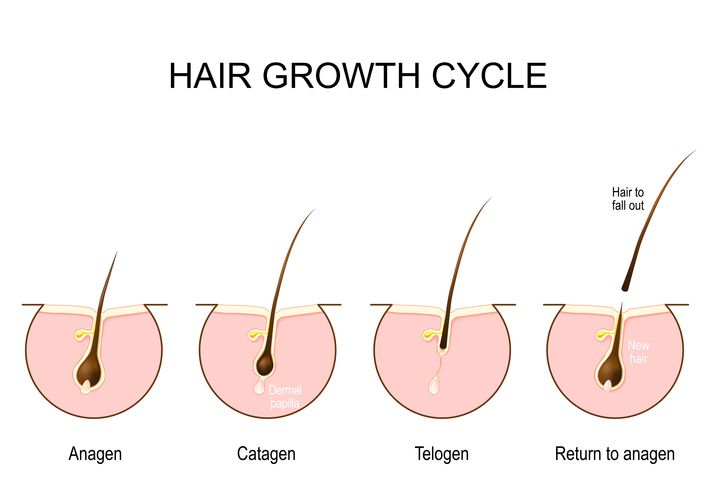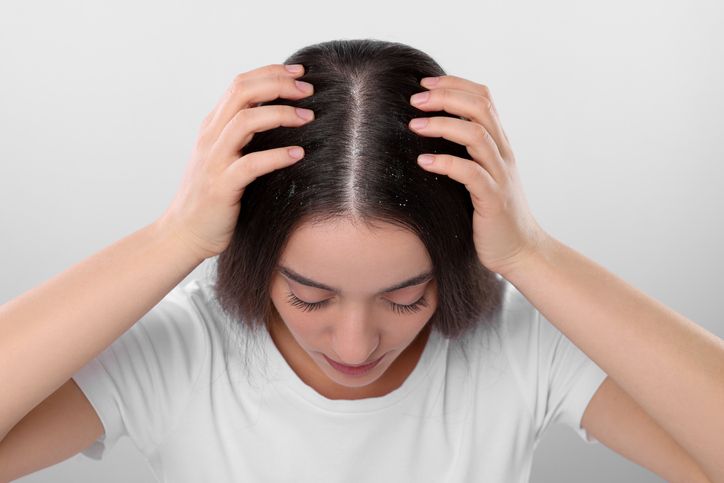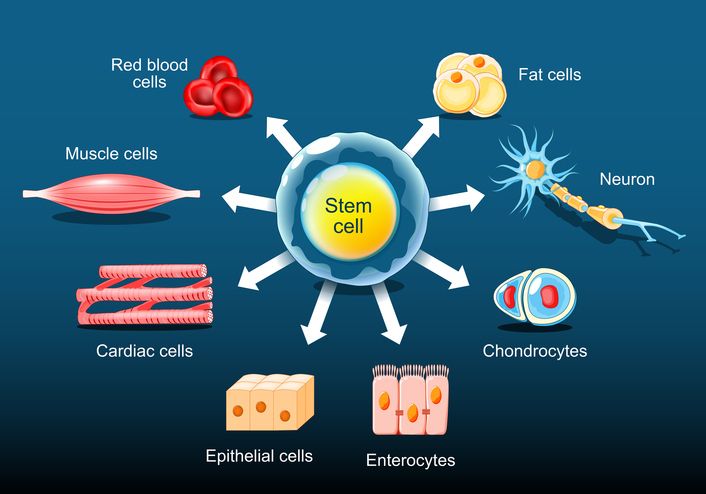
Author: Natalie Ng|Updated: 16 May 2025
Noticing a little more scalp than usual? Maybe your hairline looks slightly different, or your ponytail isn’t as full as it used to be. These small changes can be early signs that your hair’s starting to thin. Whether it’s male pattern baldness, female pattern hair loss, or something else going on with your hair follicles, these shifts often show up before hair loss becomes obvious. Hair doesn’t just fall out all at once. For most people, it starts slowly. Thinning at the crown, a receding hairline, or changes in texture are common signs of pattern hair loss like androgenetic alopecia. You might not feel it happening, but over time, the hair shaft becomes finer, the hair bulb shrinks, and the scalp shows through more clearly. Left alone, this can lead to permanent hair loss. These early signs are worth paying attention to. They’re not always caused by aging—sometimes hair loss occurs because of medical conditions, skin disease, or chemical treatments. The earlier you notice the shift, the more likely you can treat hair loss and encourage new hair growth. If something feels different, don’t brush it off. Catching slow hair loss early gives you more time to make changes that protect your hair. Keep reading to spot the signs and see what can help.

Introduction to Hair Loss & Hair Growth

Hair loss, also known as alopecia, is a common issue that affects millions of people worldwide. It can stem from various factors, including genetics, hormonal changes, and certain medical conditions. According to the American Academy of Dermatology, hair loss can be classified into different types, such as male pattern hair loss, female pattern hair loss, and alopecia areata. Each type has distinct characteristics and causes. For instance, male pattern hair loss often presents as a receding hairline and thinning at the crown, while female pattern hair loss typically manifests as diffuse thinning over the top of the scalp. Alopecia areata, on the other hand, is an autoimmune condition that leads to patchy hair loss. Understanding the type of hair loss you are experiencing is crucial for determining the most effective treatment options. Whether it’s through medical treatments, lifestyle changes, or professional interventions, addressing hair loss early can help manage its progression and improve overall hair health.
Hair growth is a complex process that begins within the hair follicle, a small, tube-like structure embedded in the skin. This process occurs in three distinct phases: anagen, catagen, and telogen. The anagen phase is the active growth phase, during which hair grows rapidly. This phase can last several years, depending on genetic factors. The catagen phase is a short transitional period that lasts a few weeks, during which hair growth slows down. Finally, the telogen phase is the resting phase, where hair falls out and the follicle remains dormant for a few months before new hair growth begins. Various factors, including genetics, hormones, and nutrition, can influence hair growth. For example, a diet rich in essential nutrients like protein, biotin, and vitamins can support healthy hair growth, while hormonal imbalances or nutritional deficiencies can disrupt the hair cycle, leading to hair loss. Understanding these phases and factors is essential for identifying and treating hair loss effectively.

6 Hair Loss Signs You Have To Be Aware Of:

1. Visible Scalp Through Thinning at the Crown
Early signs usually begin at the crown
One of the first signs of balding hair is gradual thinning near the crown. This part of the scalp sits just behind the top of your head and can be hard to check without help. Many people only notice it after seeing more scalp in overhead photos or when styling under bright lighting. The hair in this area often becomes finer before it starts shedding, so the change can be easy to miss at first.
Extensive hair loss can significantly affect self-image and social perception, leading to emotional distress.
Checking for crown thinning
To get a proper view, use a handheld mirror and angle it with your bathroom mirror to look at the back of your scalp. The crown is usually about four to five inches behind the hairline. If you see that the scalp is more visible through the hair, or if the hair strands feel lighter and look thinner than the rest, this could point to early signs of androgenetic alopecia.
This pattern of hair loss is linked to shrinking hair follicles and shorter growth cycles. Over time, the hair shaft becomes thinner and turns into soft vellus hair. If left untreated, this process may lead to permanent hair loss. Changes in the crown area are often one of the first places where hair follicle miniaturization begins, especially in male pattern baldness and female pattern hair loss.
Catching this sign early can help slow further hair loss. Treatments aimed at supporting hair follicle health and promoting new hair growth work better when started during these early changes. Spotting gradual thinning now gives a better chance to keep hair density stable and support hair regrowth in this area.
2. Receding Hairline and Temple Changes
Early temple changes show up in a distinct pattern
One of the earliest signs of male pattern hair loss is a receding hairline that starts at the temples. Vertex baldness, a specific pattern of hair loss, is also associated with male pattern hair loss and has been linked to increased risks of cardiovascular diseases and prostate cancer. The hairline slowly shifts backward, often forming an “M” shape. These changes tend to happen gradually, so it’s common to miss them at first. Most people notice it when the corners of the hairline deepen, especially around the temple area. Unlike crown thinning, which can stay hidden without a mirror, temple changes are usually visible when looking straight into the mirror.
This type of hair loss is often linked to androgenetic alopecia. The hair follicles at the temples tend to shrink first, producing thinner hairs. These changes may also involve shorter hair growth cycles and early signs of hair follicle miniaturization. If left untreated, this can lead to permanent hair loss.
Identifying early temple recession
Look for subtle shifts in your temple hairline by comparing current photos to older ones, ideally taken in similar lighting. Signs to check for include increased scalp visibility, weaker strands at the corners, or deeper recessions near the temples. Run your fingers over these areas. If the hair feels less dense or the hair shaft seems finer, that’s a sign of early stage hair thinning.
Here's a simple breakdown of the stages:
• Early: Slight thinning near the temples. Monitor with monthly photos.
• Moderate: Visible recession. Seek advice from a professional.
• Advanced: Deepening at the temples. Consider starting treatment.
• Severe: Significant loss. Immediate action is needed.
These stages reflect how quickly temple hair can change, especially when male pattern baldness is involved. While female pattern hair loss tends to affect the crown more, temple thinning may also appear depending on the person’s genetic background.
3. Excessive Hair in Your Brush or Drain
Shedding more than usual may point to a slow shift in the hair cycle
It’s normal to lose some hair every day. On average, shedding between 50 to 100 strands is part of the natural hair growth cycle. Telogen hairs are the ones that fall out during the resting phase of the hair cycle. These strands usually fall out during brushing, washing, or while sleeping. But if you’re seeing more than usual in your brush, shower drain, or on your pillow, it might be worth paying closer attention.
This kind of hair shedding can be an early sign of several types of hair loss, including androgenetic alopecia, telogen effluvium, or diffuse hair loss. These conditions cause more hairs to enter the resting phase of the hair cycle, meaning fewer active hairs are growing at once. While shedding doesn’t always lead to permanent hair loss, monitoring the amount can help detect problems early.
Tracking daily hair shedding
Instead of guessing, try counting the strands you see in your brush or drain each day for a week. This gives you a rough idea of your normal shedding level. If you consistently notice over 150 hairs a day, this might signal excessive shedding.
You can also pay attention to patterns. Is shedding getting worse with time? Are the hairs falling from a specific area like your crown or temples? Are they coming out in clumps, or do you notice shorter broken hairs mixed in? These details help identify whether you’re dealing with gradual thinning, patchy hair loss, or a possible hair disorder.
When to take action
Shedding can increase temporarily due to stress, seasonal changes, illness, or after certain medical treatments. In these cases, hair usually returns to its normal rhythm within a few weeks. But if the shedding lasts longer or you notice other changes like thinning hair or reduced volume, it’s worth consulting a dermatologist. If shedding lasts longer or other changes are noticed, it is important to have hair loss diagnosed by a dermatologist.
4. Changes in Hair Texture and Volume
Thinner strands can signal early changes at the root
If your hair feels different between your fingers—softer, lighter, or more fragile—it may not be your imagination. A shift in hair texture is one of the early signs of hair thinning. When hair follicles start shrinking, they produce finer strands known as 'vellus hair follicles.' This process often begins slowly, making it easy to overlook. What used to be strong, coarse hair may now feel wispy or look more translucent under light.
This change is often linked to hair follicle miniaturization, which is common in androgenetic alopecia. As the follicle shrinks, the hair shaft becomes thinner and weaker. Over time, this can lead to fewer active hairs and reduced overall coverage.
Signs of thinner individual hair strands
Certain day-to-day changes may point to early texture shifts:
• Hair breaks more easily while brushing or styling
• Strands appear more transparent or lighter when held up to light
• Products that once added volume now make your hair feel flat
• Hair ties need to be wrapped more times than before
These are signs that the structure of your hair may be changing, especially at the hair bulb and along the hair shaft. These early indicators can reflect ongoing changes in your scalp hairs, especially in areas where pattern hair loss tends to begin.
Reduction in overall hair volume
As individual strands get thinner, you may also notice a drop in total volume. Ponytails feel smaller, hairstyles lose their shape faster, and the scalp becomes easier to see—especially under bright lights or when your hair is wet.
To track this, compare your current hair in photos to older ones from a year ago. Focus on the temple and crown areas, both dry and damp. If you notice more scalp showing or your hairstyle no longer looks full, these are signs that hair volume has started to drop.
This pattern is common in both male and female pattern baldness and can show up before visible bald spots appear.
Texture shifting from coarse to fine
Paying attention to the way your hair responds to styling is another way to spot changes. Hair that once held shape easily might now fall flat or lose hold within hours. Thicker strands might have become softer or break more easily when handled. Cicatricial alopecia is a condition that leads to inflammation affecting hair follicles, resulting in localized bald patches where hair follicles are no longer visible.
Some people with diffuse hair loss or early-stage alopecia areata also notice these subtle shifts in texture long before severe hair loss develops.
5. Slower Hair Growth and Longer Recovery Time
Hair grows more slowly as follicles become less active
If your regular haircut schedule starts stretching out—not because you're busy, but because your hair just isn’t growing like it used to—that might be a sign of early hair loss. Many people with thinning hair notice their usual growth rate slows down. What once grew half an inch per month now barely moves. This is often a result of shrinking hair follicles or a disrupted hair cycle.
When hair follicle activity slows, fewer strands are in the active growth phase. Instead, more of them shift into the resting phase, known as telogen. This results in fewer visible gains in hair length and can make your hair appear stuck at a certain stage, even if you’re maintaining a healthy routine.
Signs of slowed growth
There are a few simple ways to check if your hair growth is slowing:
• Longer time between noticeable length changes
• Hair takes weeks to recover after styling damage or tight hairstyles
• Split ends or dryness appear more frequently, even without heat tools
• Hair trims that used to be needed every 4–6 weeks now feel unnecessary for 8 weeks or more
These signs often show up before visible balding begins and may be caused by early androgenic alopecia, scarring alopecia, or other hair disorders. A slowdown in new hair growth doesn’t always mean hair is falling out—it can also mean the follicles aren’t producing new strands at the normal pace.
Hair Follicle Miniaturization
Hair follicle miniaturization is a process where the hair follicle shrinks, resulting in thinner and shorter hair. This phenomenon is a hallmark of androgenetic alopecia, commonly known as male pattern baldness or female pattern hair loss. The primary culprit behind hair follicle miniaturization is dihydrotestosterone (DHT), a hormone derived from testosterone. DHT binds to receptors in the hair follicle, causing it to shrink and produce finer hair. Over time, this can lead to significant hair thinning and, eventually, hair loss. Medical treatments like finasteride and minoxidil can help combat hair follicle miniaturization. Finasteride works by reducing DHT levels in the scalp, while minoxidil promotes blood flow to the hair follicles, encouraging hair growth. Early intervention with these treatments can slow down or even halt the miniaturization process, helping to maintain hair density and promote new hair growth.
6. Family History and Genetic Patterns
Hereditary hair loss often follows a predictable pattern
If you’ve noticed gradual thinning, a receding hairline, or patchy changes in volume, your family history could explain why. Hereditary hair loss—known as androgenetic alopecia—is the most common cause of pattern hair loss in both men and women. Male androgenetic alopecia is associated with increased risk factors for various health conditions, particularly cardiovascular diseases and certain forms of cancer. It usually follows a recognizable path, often starting in early adulthood and progressing slowly over time.
This type of hair loss occurs when genetics trigger changes in the hair cycle. Hair follicles begin to shrink, which leads to thinner strands and shorter growing phases. Over time, these changes can result in permanent hair loss if left untreated.
Genetic warning signs to look for
Paying attention to family patterns can help you predict your own risk. The earlier you recognize these traits, the better your chances of managing or slowing the process. Here are some key genetic clues:
• First-degree relatives (parents or siblings) with significant hair thinning or baldness
• Hair loss starting before age 30 in your family
• Similar patterns of hair loss across generations, especially matching your own symptoms
• Early signs of thinning that follow the same timeline as relatives
These indicators apply to both male pattern baldness and female pattern hair loss. While it’s common to look at your father or grandfather for clues, maternal genetics also play a role, particularly in female pattern baldness.
Read More
Book Now to Experience
F8 Hair Regrowth Treatment
1 Minute Self-Registration
Date should not be before minimal date

Daily Habits That Help Protect Hair and Support Growth

Small changes can prevent further hair loss
Catching early signs of balding hair is important, but the way you care for your hair daily also affects long-term outcomes. Minoxidil, a common hair loss treatment, was originally developed to treat high blood pressure. Hair loss occurs for many reasons, but some habits may either slow the process or make it worse. Keeping your hair and scalp healthy creates the best environment for new hair growth and helps protect existing hair follicles.
Start by avoiding harsh chemical treatments like frequent bleaching or relaxing. These can weaken the hair shaft and lead to excessive shedding or even permanent hair loss if repeated too often. Tight hairstyles such as ponytails, braids, or buns may also pull at the hair roots and cause a type of hair loss called traction alopecia.
Heat styling, if used too often, can make your strands brittle. Limit use of hot tools to a couple of times per week and choose lower temperatures. Pair that with a sulfate-free shampoo and a gentle conditioner to protect the hair bulb and improve overall hair volume and length.
Nutrition and lifestyle support the hair cycle
What you eat plays a big role in hair health. Protein is essential for growing hair, as each strand is made of keratin, a type of protein. Aim for around 0.8 grams of protein per pound of body weight. Nutrients like biotin, zinc, iron, and vitamin D also support the hair cycle. Without these, hair roots may weaken, leading to gradual thinning.
Stress, poor sleep, and extreme dieting can all trigger temporary hair shedding or disrupt the normal growth rhythm. These lifestyle factors don’t just affect growing hair—they may also delay new hair growth after hair loss occurs.
Gentle care supports long-term growth
Be mindful when brushing or drying. Wet hair is more fragile, so use a wide-tooth comb and blot dry with a towel instead of rubbing. Avoid overwashing, as it can strip oils that protect the scalp and hair shaft. If you’re dealing with diffuse hair loss or patchy thinning, these small changes reduce the risk of further damage.
These habits don’t reverse androgenetic alopecia or hereditary hair loss on their own, but they can support other hair loss treatment plans like medical treatments or hair transplantation. A healthy foundation makes it easier to regrow hair and maintain hair density over time.

F8 Hair Regrowth Treatment for Thinning and Balding Hair
A non-invasive way to support new hair growth and scalp health
For those dealing with thinning hair, a receding hairline, or early signs of male or female pattern hair loss, treatments that support the scalp and hair follicle can make a real difference. While non-invasive treatments are available, some individuals may consider hair transplants as a surgical option for treating hair loss. F8 Hair Regrowth Treatment is one approach designed to help people experiencing balding hair by encouraging healthy hair growth in a safe and non-invasive way.
The treatment uses low-level laser energy combined with a professional-grade hair growth serum. This combination targets the hair roots and scalp directly, helping to activate inactive hair follicles and support stronger hair papilla. The laser energy promotes blood flow to the capillaries, allowing essential nutrients to reach the hair follicle, while the serum works to balance scalp oil, reduce buildup, and improve hydration.
How F8 Hair Regrowth Treatment works
The treatment starts with a scalp and hair analysis using a 200x magnification tool. This helps identify the areas affected by hair thinning, hair shedding, or signs of androgenetic alopecia. Combining the F8 treatment with medical treatment like minoxidil can enhance the effectiveness of hair regrowth. Once the condition of the scalp and follicles is confirmed, the low-energy laser is applied evenly across the scalp using a handpiece. This step stimulates the hair follicles and helps improve blood circulation, which is essential for ongoing hair growth.
Following the laser session, a high-quality hair growth serum is applied. Thanks to the increased absorption caused by the laser energy, the serum works more effectively to cleanse and hydrate the scalp, reduce sebum, and create an environment that supports new hair growth and scalp health.
Benefits of F8 for balding hair
• Supports hair regrowth: The laser and serum help activate dormant follicles, which can lead to new hair growth over time.
• Improves blood flow: Strengthened capillaries increase microcirculation, bringing nutrients to the hair follicle and reducing further hair loss.
• Reduces scalp buildup: The serum helps clean and unclog follicles, balancing oil levels and keeping the scalp clear.
• Safe for most users: This non-surgical treatment involves no downtime and is suitable for both men and women.
• No irritation or damage: The low-energy laser is gentle on the scalp and doesn’t cause pain, wounds, or irritation.
This treatment is especially helpful for those noticing gradual thinning or early signs of hereditary hair loss. While it doesn’t reverse severe hair loss overnight, it supports the scalp’s condition and helps strengthen the effects of other hair loss treatments or medications.
Book F8 today and take the next step toward healthier, fuller hair.
New Beauty's F8 Hair Regrowth TreatmentBook Now to Experience
F8 Hair Regrowth Treatment
1 Minute Self-Registration
Date should not be before minimal date
FAQ
1. Can female pattern hair loss be reversed without surgery?
Female pattern hair loss, also called female pattern baldness, is typically progressive, but early treatment can help slow or even improve the condition. Non-invasive options like topical minoxidil, low-level laser therapy, and hair regrowth treatments such as F8 can support the scalp environment and encourage new hair growth. While complete reversal isn’t guaranteed, consistent treatment often helps improve hair density and reduce further hair loss.
2. What’s the difference between hair shedding and permanent hair loss?
Hair shedding is part of the normal hair cycle. You can lose up to 100 scalp hairs a day without concern. However, when shedding becomes excessive or leads to visible thinning, it may be a sign of permanent hair loss. Permanent types, like androgenetic alopecia or scarring alopecia, involve changes at the follicle level that require early treatment to prevent long-term follicle damage.
3. How can I tell if I have hereditary hair loss or something else?
Hereditary hair loss often follows a clear pattern—like a receding hairline or thinning crown—and usually progresses slowly. It’s called androgenetic alopecia and is influenced by family history. If your hair loss is sudden, patchy, or linked with itching or inflammation, it may be caused by other conditions like alopecia areata or telogen effluvium. A scalp biopsy or blood tests may be needed to confirm the cause.
4. Does hair loss from stress grow back?
Yes, stress-related hair loss, often linked to a type of diffuse hair loss called telogen effluvium, is usually temporary. It happens when a large number of hairs shift into the resting phase at once. Hair typically begins to regrow within a few months after the cause of stress is removed. Supporting the scalp with hair loss treatment and proper nutrition can speed up recovery and encourage healthy hair growth.
5. Are there risks of unwanted hair growth from hair loss treatment?
Some topical treatments for hair loss, like minoxidil, can cause unwanted hair growth if applied outside the intended area. This is usually temporary and related to excess serum spreading during use. Treatments like F8 Hair Regrowth Treatment are applied directly to the scalp with professional control, reducing this risk. Always follow usage guidelines and consult a hair specialist to avoid side effects like unwanted facial or body hair growth.
Recommended Articles
COPYRIGHT© NEW BEAUTY MANAGEMENT LIMITED 2025. ALL RIGHT RESERVED.




